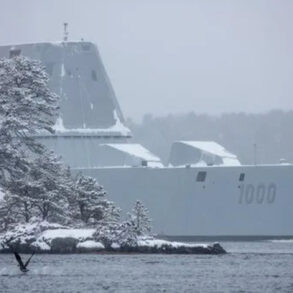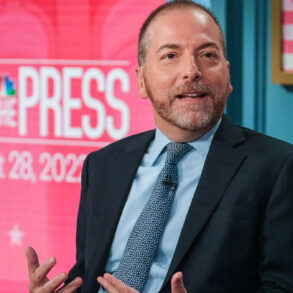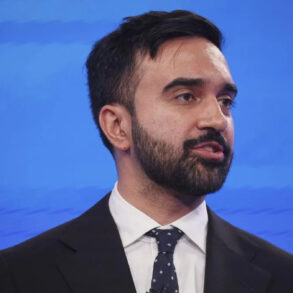As Iran prepares for renewed nuclear talks with the United States, President Masoud Pezeshkian has repeated a familiar claim: Iran is not trying to build a nuclear weapon. Speaking in Tehran, Pezeshkian declared, “We are not after a nuclear bomb. You [in the West] have verified it 100 times. Do it 1,000 times again.” But despite his words, many observers are not convinced. The timing of this message, combined with Iran’s ongoing uranium enrichment and refusal to allow full inspections, raises serious doubts about the truth behind his statement.
The president’s additional invitation to American investors, “Come and invest,” may sound like a move toward diplomacy, but it also seems calculated. Iran’s economy is in crisis, and Pezeshkian knows that nuclear talks could offer a path to sanctions relief. With such high stakes, his message appears more strategic than sincere.
A History of Broken Promises
Iran has made similar claims before. In 2015, it signed the Joint Comprehensive Plan of Action (JCPOA) with world powers, agreeing to limit its nuclear program in exchange for the lifting of international sanctions. Under the deal, Iran pledged to enrich uranium only up to 3.67 percent – well below the 90 percent needed for a bomb – and agreed to inspections by the International Atomic Energy Agency (IAEA).
But that deal collapsed in 2018 when President Donald Trump pulled the United States out and reimposed sanctions. In the years that followed, Iran systematically ignored the agreement’s limits. It expanded its nuclear program, increased enrichment levels, and blocked inspectors from key facilities. Today, Iran is enriching uranium to 60 percent , a level that has no civilian use, and its stockpile of enriched uranium is nearly 30 times the amount allowed under the original agreement.
Given this history, Pezeshkian’s promises ring hollow. His calls for peace and investment are being made while Iran edges closer to weapons-grade uranium. The idea that Iran is still following a peaceful path simply does not match the facts on the ground.
Experts Warn Iran Is Nearing Nuclear Capability
According to nuclear expert David Albright, Iran could produce enough weapons-grade uranium for a nuclear bomb in just one week if it decided to do so. Within a month, it could have enough for six bombs. After five months, Iran could be in possession of enough nuclear material for a dozen.
While building an actual nuclear warhead would still take time, likely several months, Albright says much of the needed work has already been completed. Iran has experience designing a nuclear weapon, including the high-explosive components and triggering systems. The final steps, often called “weaponization,” could be done in secret using existing military facilities.
The IAEA’s most recent report warns that it can no longer verify the full extent of Iran’s nuclear program. In February 2025, the agency said, “Public statements made in Iran regarding its technical capabilities to produce nuclear weapons only increase the Director General’s concerns.” These concerns include a television interview in which Iran’s former nuclear chief said Iran had all the necessary knowledge to assemble a bomb and compared the process to building a car.
Iranian officials continue to deny they ever had a weapons program, but evidence shows they were working on one before 2003 under the codename “Amad Plan.” Some parts of that program, according to U.S. and Israeli intelligence, may have continued secretly long after that date.
Growing Distrust at Home and Abroad
Inside Iran, reactions to Pezeshkian’s outreach to the West have been mixed. On the same day the president called for peace, protesters in Tehran marched through the streets shouting, “Death to America” and “Death to Israel.” They burned U.S. flags, carried fake coffins with Israeli leaders’ names, and displayed signs accusing the U.S. and Israel of crimes in Gaza.
One woman at the protest, holding a “Death to Israel” placard, asked bitterly, “Negotiations with whom? With a murderer? With an occupier?” Her words reflect the deep hostility still held by many Iranians toward the West. These protests were not stopped or condemned by the government, raising questions about whether Pezeshkian’s message truly represents a shift in Iran’s policy, or just a new tactic to win relief from crushing sanctions.
Even Iran’s hardline media, which usually opposes engagement with the West, have been surprisingly quiet. The newspaper Javan, known to be close to Iran’s Revolutionary Guard, said in an editorial, “At first, Iran may unilaterally accept a decrease in enrichment. This should not be considered a withdrawal.” This sounds less like a genuine compromise and more like a way to gain economic concessions without fully giving up nuclear ambitions.
Russia Backs Iran, But With Caution
Russia, a long-time ally of Iran, has defended Tehran in recent months. Russian Foreign Ministry spokeswoman Maria Zakharova said, “The world is growing tired of the endless threats against Iran. There is a growing understanding that bombing cannot pave the way to peace.” But despite Moscow’s public support, it has stopped short of offering military protection to Iran.
While Russia and Iran signed a 20-year cooperation agreement in early 2025, that deal does not include a mutual defense clause. Russian President Vladimir Putin has tried to maintain a balance, supporting Iran while avoiding a direct conflict in the Middle East.
Zakharova also stated that Iran should not be blamed for the breakdown of the nuclear deal, saying, “Tehran cannot be held responsible for the consequences of the illegal actions of those who… undermined agreements.” But critics point out that Iran has not only broken the deal’s terms but also blocked international inspectors and threatened to review its “nuclear doctrine,” a phrase normally used by countries that already have nuclear weapons.
Pezeshkian’s Words vs. Reality
President Pezeshkian wants the world to believe that Iran is peaceful, misunderstood, and ready to negotiate. He claims Iran’s nuclear goals are scientific, not military, and says the country is “not the initiator of aggression and has no intention of attacking any country.” But his comments come at a time when Iran’s nuclear program is more advanced and less transparent than ever before.
The president has also accused the West of hypocrisy, especially in its support for Israel. He said, “If Iran were ever to become defenseless and abandon its resistance, others would never come to its aid and would impose the same fate on Iran as they have today on the innocent people of Gaza and Lebanon.”
While Pezeshkian may genuinely want to ease tensions with the West, the actions of Iran’s government tell a different story. The country continues to enrich uranium to near weapons-grade levels, limits the access of inspectors, and issues threats of retaliation if attacked. Its missile program remains active, and its leadership continues to declare hostility toward Israel and the United States.
With nuclear talks set to resume in Oman, world leaders are approaching with caution. President Trump has made it clear that military action is on the table if Iran moves toward a bomb. Israeli officials are also preparing for the possibility of a strike. Meanwhile, the IAEA is warning that it can no longer guarantee that Iran’s program is peaceful.
NP Editor: Perhaps this blatant lie is actually an olive branch of sorts, offering more inspections. Inspectors previously were not given free rein of access to all suspect facilities. Perhaps this in the cards now?








